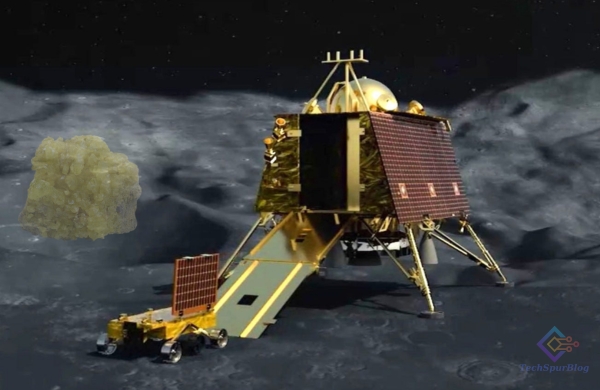
The Laser-Induced Breakdown Spectroscopy (LIBS) instrument aboard India’s Chandrayaan-3 rover has made groundbreaking in-situ measurements of the elemental composition of the lunar surface near the South Pole. This discovery unequivocally confirms the presence of sulfur (S) in that region, a revelation previously unverified by orbiting instruments. The mission has also identified other vital elements, enhancing our understanding of the sparsely explored lunar South Pole.
The Indian Space Research Organization (ISRO) reported that the Chandrayaan-3 rover, which successfully landed at the lunar South Pole on August 23, has achieved its first significant breakthrough within just one week of operation. It has definitively identified the presence of sulfur (S), marking a critical milestone in lunar exploration.
Chandrayaan-3 Mission:
In-situ Scientific ExperimentsAnother instrument onboard the Rover confirms the presence of Sulphur (S) in the region, through another technique.
The Alpha Particle X-ray Spectroscope (APXS) has detected S, as well as other minor elements.
This… pic.twitter.com/lkZtz7IVSY
— ISRO (@isro) August 31, 2023
Preliminary data also strongly suggest the presence of aluminum (Al), calcium (Ca), iron (Fe), chromium (Cr), titanium (Ti), manganese (Mn), silicon (Si), and oxygen (O). An exhaustive investigation is underway to confirm the presence of hydrogen, with a primary goal of detecting frozen water, which could be pivotal for the sustainability of future lunar colonies.
The Quest for Frozen Water
Chandrayaan-3 will now spend the next two weeks utilizing its laser to search for signs of frozen water while continuing to study the lunar surface and atmosphere. The diminutive rover weighs only 25.8 kilograms and is roughly the size of a medium-sized dog. India’s remarkable achievement, becoming the first nation to descend to the lunar South Pole, is not an isolated feat. In the coming days, India will also launch a scientific satellite to study the Sun.
PSLV-C57/Aditya-L1 Mission:
The 23-hour 40-minute countdown leading to the launch at 11:50 Hrs. IST on September 2, 2023, has commended today at 12:10 Hrs.The launch can be watched LIVE
on ISRO Website https://t.co/osrHMk7MZL
Facebook https://t.co/zugXQAYy1y
YouTube…— ISRO (@isro) September 1, 2023
For a long time, scientists have believed that the lunar South Pole holds the greatest potential for water, possibly frozen in various areas, forming multiple “deposits” where the liquid has remained trapped and shielded, such as in craters. Identifying this resource could be vital for upcoming missions planned by major space agencies to the moon.
Also Read: Successful Lunar Landing Achieved by India’s Space Mission Chandrayaan-3
Frozen water could be used to produce breathable oxygen in future lunar bases with permanent human presence through a chemical separation process that extracts oxygen from hydrogen. Additionally, it could provide compounds as rocket fuel, for instance, to launch missions from the lunar surface to Mars.
Chandrayaan-3’s mission continues to unveil the secrets of our closest celestial neighbor, marking a significant leap in lunar exploration and paving the way for potential future lunar colonies and interplanetary missions.

Leave a Reply